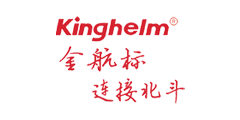Types, Characteristics and Prospects of Type-C Interfaces

Type-C is a popular interface standard that is widely used in various electronic devices, such as mobile devices, PC devices, and home appliances. The characteristics of Type-C include its small size, high transmission speed, and bi-directional transfer capability, making it an ideal interface choice for various devices. In this article, Kinghelm will provide a detailed introduction to the types and characteristics of Type-C, its application scenarios in different fields, and the future development trends and prospects of Type-C.
There are three main types of Type-C Interfaces: Type-A, Type-B, and OTG (USB On-The-Go).
Type-A is the most common type of Type-C interface, which features a USB port and a small flip cover for convenient plug-and-play. Its design is simple and stylish, and it is widely used in various mobile devices such as smartphones, tablets, and laptops.
Type-B Type-C interface, also known as USB 3.1, has a faster transmission speed, reaching up to 10Gbps. It is mainly used in high-performance mobile devices and PC devices, such as high-end smartphones, tablets, and gaming consoles.
OTG is a special type of Type-C that supports reverse charging and data transfer for USB devices. The OTG Type-C interface can charge itself or transfer data through the USB interface of other devices even without a power supply. It is mainly applied in various mobile devices that support reverse charging, such as smartphones and tablets.

The Type-C interface has the following characteristics:
Small Size: The Type-C interface is compact, which helps save space and makes electronic devices more lightweight and portable.
High Transmission Speed: The Type-C interface offers fast transmission speeds. Whether it is Type-A, Type-B, or OTG, its transfer rate is higher than that of traditional USB interfaces.
Bi-directional Transfer: The Type-C interface supports bi-directional transfer of data and power, making charging and data transfer more convenient.
Fast Charging: The Type-C interface supports fast charging, significantly reducing charging time and improving device battery life.
Multi-functionality: The Type-C interface also supports the transfer of multimedia data such as video and audio, enhancing the device's functionality.
The Type-C interface is widely used in various fields:
Mobile Devices: The Type-C interface has become the standard interface for smartphones, tablets, and other mobile devices. It enables fast charging, data transfer, audio output, and other functions on these devices.
PC Devices: The Type-C interface is also extensively used in PC devices such as laptops and desktops. It provides faster transfer speeds and charging capabilities, enhancing device performance and convenience.
Home Appliances: In recent years, home appliances have also started to adopt the Type-C interface, including smart TVs, audio systems, digital cameras, and more. It offers higher data transfer rates and charging capabilities, simplifying and speeding up device connections.
With continuous technological advancements and expanding application scenarios, the future development prospects of Type-C are promising. Here are a few potential trends:
Faster Transmission Speeds: As electronic device performance continues to improve, the demand for faster data transfer rates increases. In the future, Type-C's transmission speeds may further improve to meet these higher data transfer requirements.
Higher Energy Efficiency: Energy efficiency has become a global trend due to increasing environmental concerns. In the future, Type-C may adopt more efficient charging technologies to reduce energy consumption and improve device battery life.
Broader Application Areas: Currently, Type-C is widely used in mobile devices, PC devices, and home appliances. In the future, it may find applications in more areas such as smart homes, the Internet of Things (IoT), etc., to meet diverse connectivity and transfer needs.
Enhanced Versatility: In the future, Type-C may integrate additional functionalities such as audio, video, and data transfer to provide richer application scenarios and more efficient data transfer capabilities.
- +1 Like
- Add to Favorites
Recommend
- Faster and More Stable Connection with Kinghelm KH-TYPE-C-CB.W-16P Electrical Data Connector for Digital Products and Electronic Devices
- Protect Your Type-C Port with Kinghelm Type-C Female Socket Clip - KH-TYPE-C-JB.W-16P to Solve Your Connection Problems
- Kinghelm Type-C Female Connector Straight Insertion - KH-TYPE-C-L13.7-6P: A High-Quality Solution to Type-C Interface Application Challenges
- High-speed transmission and high-current output: Kinghelm KH-TYPE-C-L15-6P USB Type-C receptacle
- Kinghelm’s KH-TYPE-C-L13-6P Straight Type-C Female Connector Achieve High-Speed Transmission and Fast Charging
- Type-C Female Connector with Right Angle KH-TYPE-C-W-16P-T Solves The Existing Interface Difficulties and Makes Device Interconnection Easier
- Kinghelm Type-C Female Socket KH-TYPE-C-6P-T for Fast Charging and Data Transfer of Smart Devices
- Kinghelm Launches High-Quality Type-C Female Sockets KH-TYPE-C-6P to Meet The Needs of Modern Electronic Equipment Connectors
This document is provided by Sekorm Platform for VIP exclusive service. The copyright is owned by Sekorm. Without authorization, any medias, websites or individual are not allowed to reprint. When authorizing the reprint, the link of www.sekorm.com must be indicated.





























































































































































































































































































































































































































































































































































































































































































































































































































